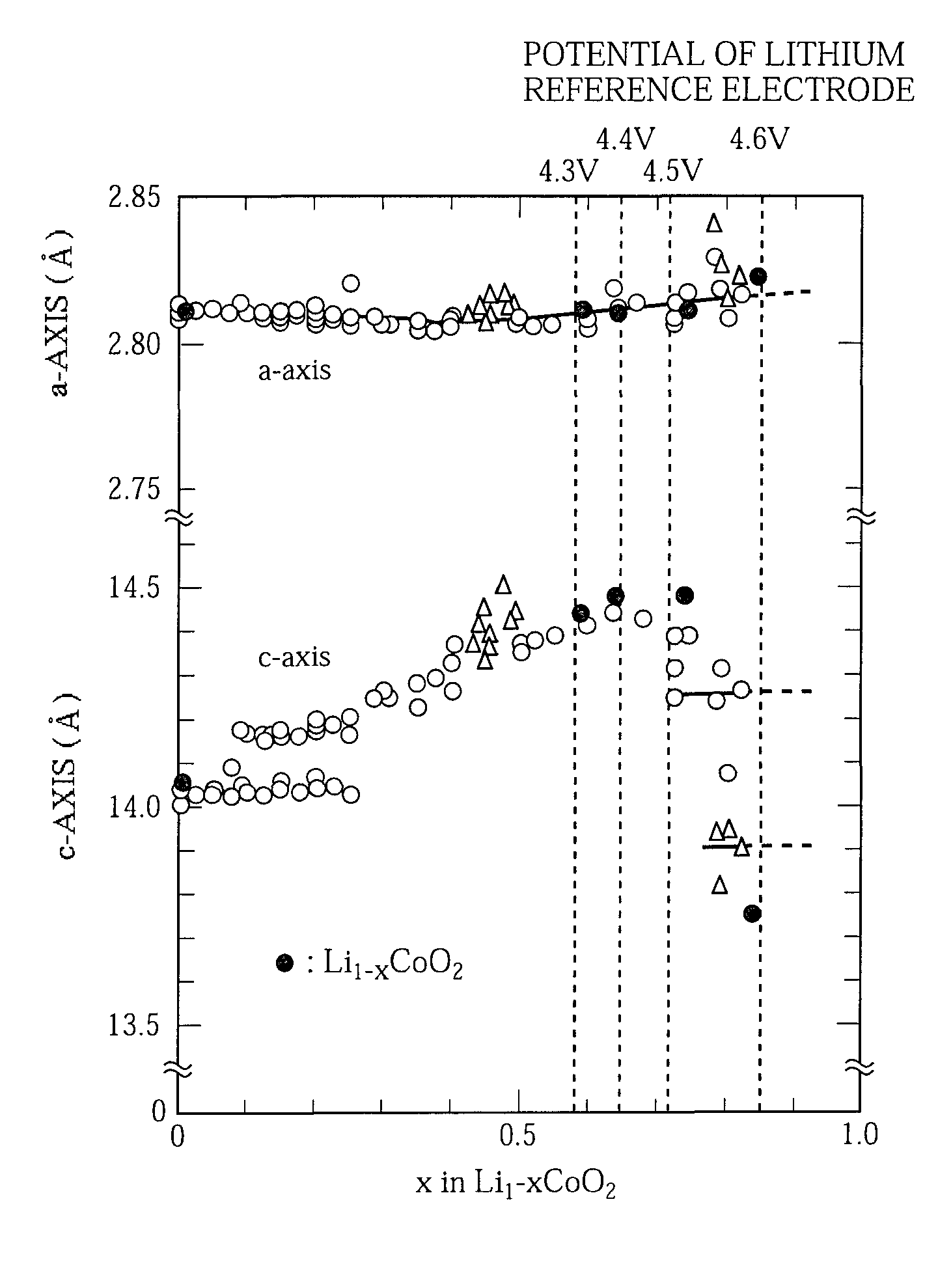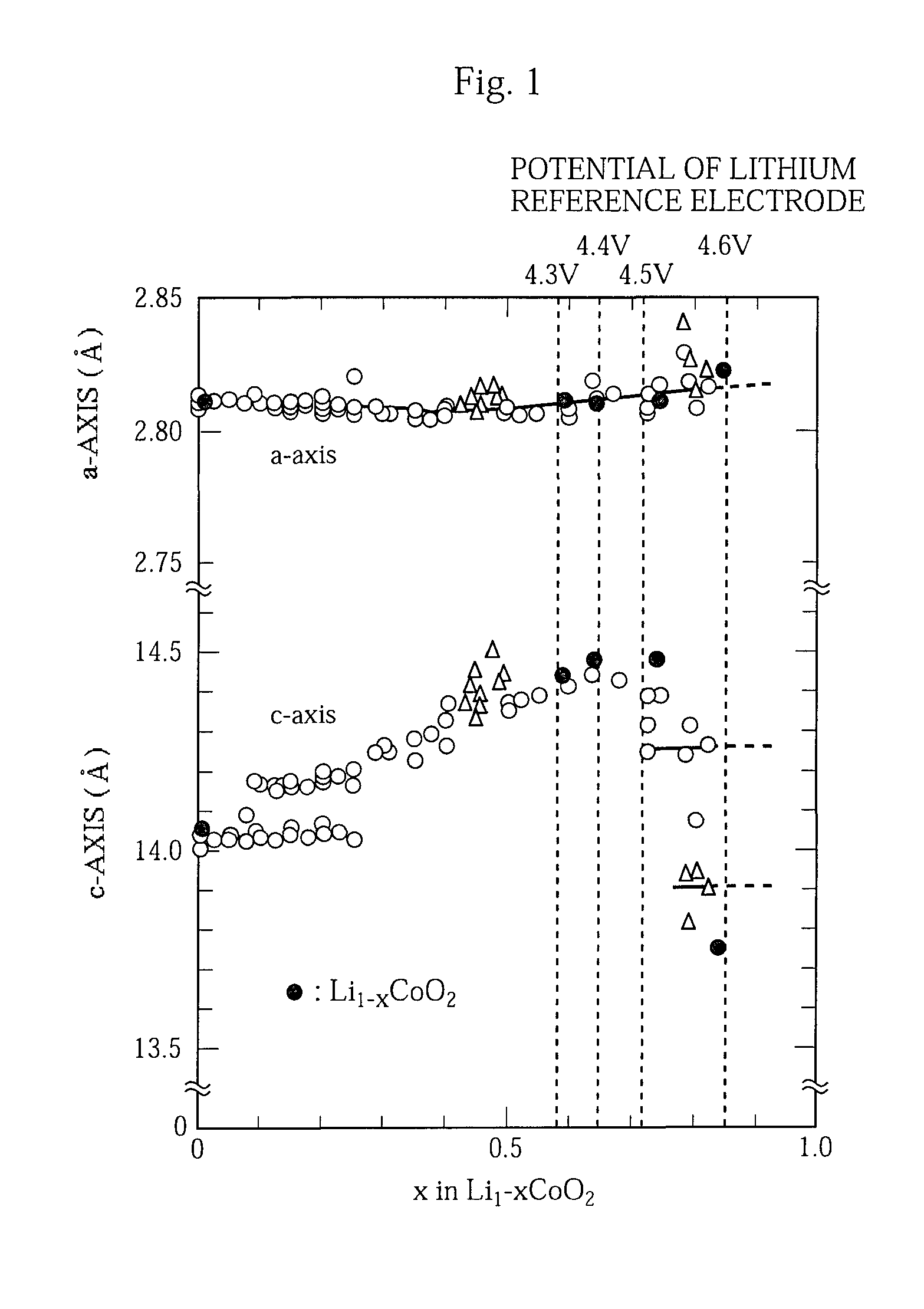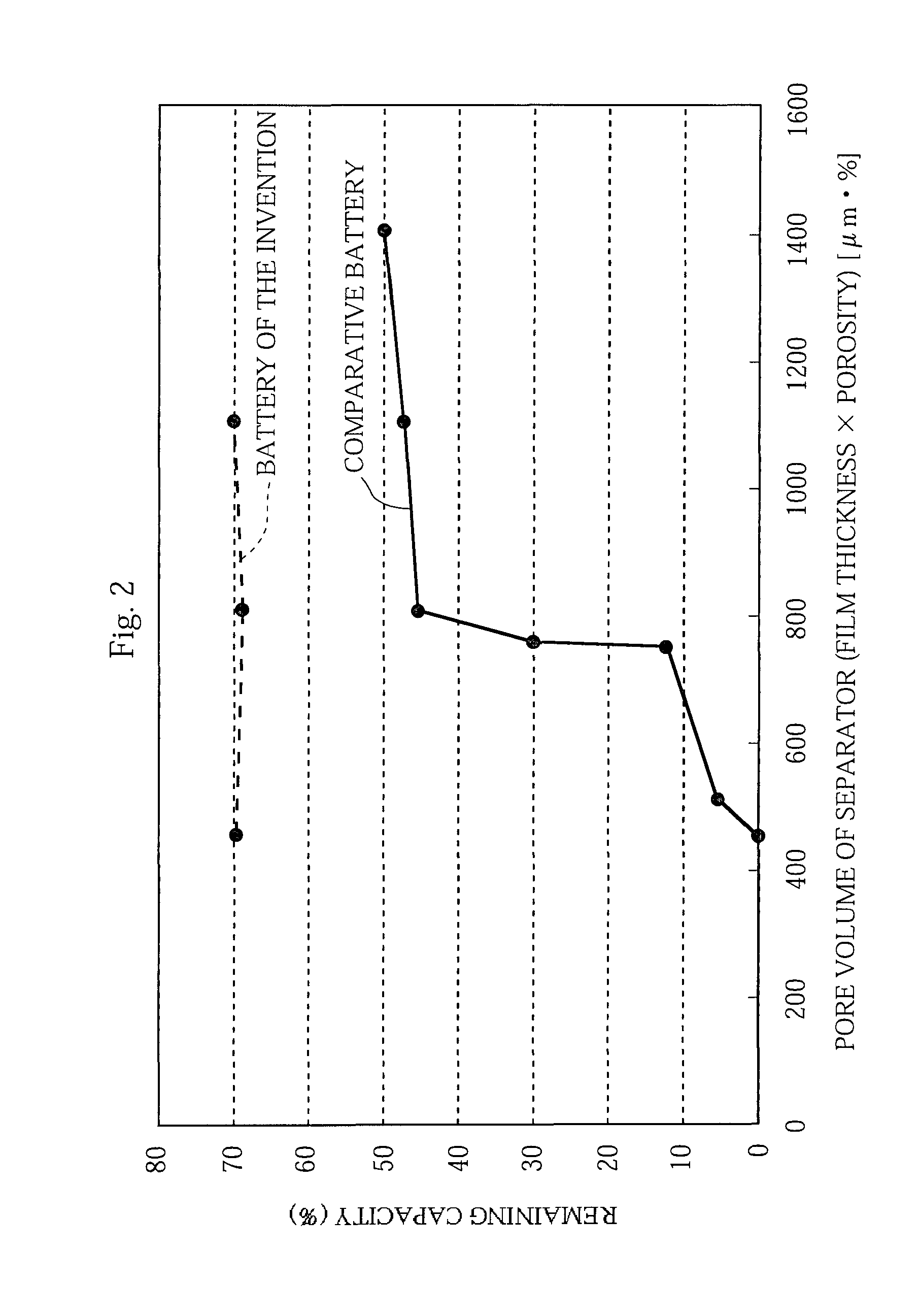Non-aqueous electrolyte battery and method of manufacturing the same
a non-aqueous electrolyte, battery technology, applied in the direction of cell components, final product manufacturing, sustainable manufacturing/processing, etc., can solve the problems of battery with an elevated end-of-charge voltage losing the stability of the crystal structure, deterioration of cycle performance and storage characteristics, and significant battery performance degradation, etc., to achieve the effect of increasing the internal resistance of the battery and reducing the energy density of the battery
- Summary
- Abstract
- Description
- Claims
- Application Information
AI Technical Summary
Benefits of technology
Problems solved by technology
Method used
Image
Examples
first embodiment
[0106]The first embodiment describes an embodiment in which a water-insoluble binder alone is used as the binder of the coating layer of the separator.
[Preparation of Positive Electrode]
[0107]First, lithium cobalt oxide (in which 1.0 mol. % of Al and 1.0 mol. % of Mg are contained in the form of solid solution and 0.05 mol. % of Zr is present on the surface) as a positive electrode active material, acetylene black as a carbon conductive agent, and PVDF as a binder agent were mixed together at a mass ratio of 95:2.5:2.5. Thereafter, the mixture was agitated together with NMP as a solvent, using a Combimix mixer made by Tokushu Kika Kogyo Co. Ltd., to thus prepare a positive electrode mixture slurry. Next, the resultant positive electrode mixture slurry was applied onto both sides of a positive electrode current collector made of an aluminum foil, and the resultant material was then dried and pressure-rolled, whereby a positive electrode was prepared in which positive electrode active...
second embodiment
[0112]The second embodiment describes an embodiment in which a water-insoluble binder and a water-soluble binder are used as the binder of the coating layer of the separator.
[0113]A battery was fabricated in the same manner as in described in the first embodiment above, except that the separator was prepared in the following manner and that the coating layer of the separator described below was disposed on the negative electrode side.
[0114]First, 10 mass % of TiO2 particles (rutile-type, particle size 0.38 μm, KR380 manufactured by Titan Kogyo Co., Ltd.) serving as filler particles, 1 mass % of copolymer (water-insoluble polymer) containing an acrylonitrile structures (unit) serving as a binder agent, and 1 mass % of CMC (carboxymethylcellulose sodium, water-soluble polymer) serving as a thickening agent, 1 mass % of polyalkylene-based nonionic surfactant, and 87 mass % of water as a solvent were mixed together, and a mixing and dispersing process was carried out using a Filmics mix...
third embodiment
[0115]The third embodiment describes an embodiment in which LiBF4 is added to the non-aqueous electrolyte solution.
[0116]A battery was fabricated in the same manner as in described in the first embodiment above, except that a non-aqueous electrolyte solution prepared in the following manner was used as the non-aqueous electrolyte solution and that a separator prepared in the following manner was used as the separator.
[Preparation of Non-aqueous Electrolyte]
[0117]LiPF6 and LiBF4 were dissolved at a proportion of 1.0 mole / liter (M) and at a proportion of 1 mass %, respectively, in a mixed solvent of 3:7 volume ratio of ethylene carbonate (EC) and diethyl carbonate (DEC) to prepare a non-aqueous electrolyte.
[Type of Separator]
[0118]A microporous PE film (film thickness: 12 μm, average pore size 0.1 μm, porosity 38%) was used as the separator main body, and the above-described slurry in which TiO2 was dispersed was coated only on the surface of the positive electrode side of the separat...
PUM
 Login to View More
Login to View More Abstract
Description
Claims
Application Information
 Login to View More
Login to View More - R&D
- Intellectual Property
- Life Sciences
- Materials
- Tech Scout
- Unparalleled Data Quality
- Higher Quality Content
- 60% Fewer Hallucinations
Browse by: Latest US Patents, China's latest patents, Technical Efficacy Thesaurus, Application Domain, Technology Topic, Popular Technical Reports.
© 2025 PatSnap. All rights reserved.Legal|Privacy policy|Modern Slavery Act Transparency Statement|Sitemap|About US| Contact US: help@patsnap.com



